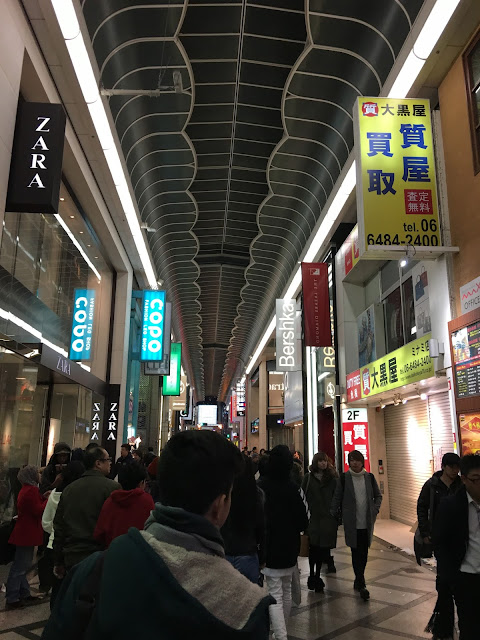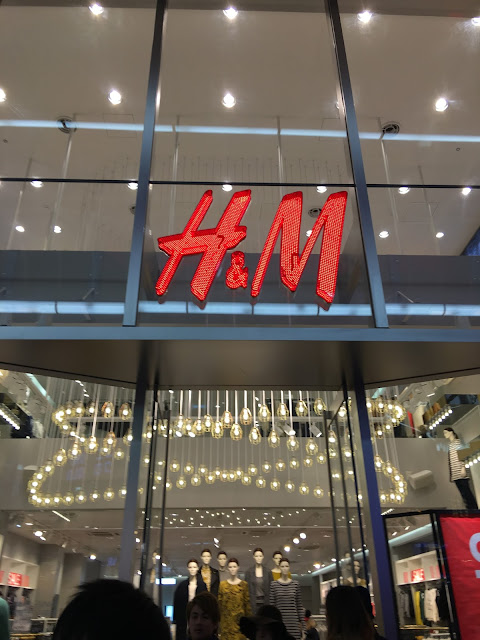 |
| Hatsumode: The First Shrine Visit for the Year |
This is Part 2 of a 5 Part Series that describes in detail my
family’s 6D/5N Trip to Osaka, Japan.
While working on our
itinerary, I chanced upon an article stating that most tourist attractions are
closed on New Year’s Day. I read that in visiting Japan during the New Year, it
is best to join the crowd doing hatsumode, the first visit to a shrine or
temple. What better way to experience this festival than visit Nara, Japan’s
first permanent capital which houses the oldest and largest temples.
 |
| A woman working at the train station helps my mom and brothers purchase train tickets. |
On our second day in Japan,
we headed North to Nara, the first capital of Japan. Nara can be reached from
Namba through the Kintetsu Line. The forty-minute train ride from Namba to the
Kintetsu-Nara Station costs 560 JPY.
I have read that one day is
sufficient to tour Nara and visit its famous temples. This is very true as all
tourist attractions are within walking distance from each other. Of course, one
may take the bus instead. I personally prefer walking as it helps me better
appreciate the place. It is very easy to locate the attractions as there are
street signs all over the place. There are also maps that you may grab for free
at the Station. If all else fails, there is always Google Maps or that Maps App on your iPhone.
 |
| Walking towards Nara Park. That's me explaining the route to my mom. In front of us are my two brothers, trying to figure out the route as well. |
I was intent on following
the Half-Day Nara Itinerary from Inside Kyoto. En route to the Todaiji-Temple
from the Kintetsu Nara Station, however, we encountered various tourist
attractions including the Nara Koen Park and the Kokufuji Temple, a UNESCO
World Heritage Site. Both sites are five minutes away from the Kintetsu-Nara
Station.
 |
| Kokufuji Temple: A UNESCO World Heritage Site |
 |
| My OOTD. Pink and blue to welcome 2016. |
 |
| By the entrance to the Kokufuji |
Unfortunately, we were not
able to visit the Kokufuji Temple. We just had our pictures taken near the
marker that states that it has been declared as a UNESCO World Heritage Site.
My brothers were pretty much excited with their encounter with the deers (A
little trivia, deers are considered sacred and divine in Nara in the past being
messengers of the gods. After World War II, however, they were stripped off
their divine nature. Nevertheless, they are still considered as national treasures).
 |
| A deer at the Nara Koen Park |
 |
| My brother and the Deer |
 |
| Hurry Up Mom! The deer might attack us! |
From the Kokufuji Temple, we
headed straight to the Todaiji Temple, following the street signs. The Todaiji
Temple, according to Wikipedia, is one of the most famous and historically
significant temples in Nara and is likewise listed as a UNESCO World Heritage
Site.
As promised by several
internet articles on celebrating New Year’s Day in Japan, a festive atmosphere
awaits us as we begin our entry to the Todaiji Temple through the Nandaimon
Gate. Food stands are everywhere, offering participants of the Hatsumode
festivities with local snacks.
We tried the Bananas that are covered in different
flavors (My mom and I got strawberry coated bananas while my brother tried the one covered in milk – the green one).
The Nandaimon Gate is
likewise watched over by fierce looking statues that are considered as
guardians. These statues are likewise considered as national treasures.
At the center of the Todaiji
Complex is its main hall, the Daibutsuden or Great Buddha. It is considered as
the world’s largest wooden building which houses the largest bronze statue of
Buddha. The hall also displays other Buddhist statues. While there is no
admission fee to the Todaiji Complex, a fee of 500 JPY is required before entry
to the Daibutsuden Hall.
 |
| That's the Great Buddha behind us |
Another popular attraction contained in this hall is a
pillar with a hole which is said to be of the same size as the nostril of the
Great Buddha. Legend states that anyone who can squeeze through this opening
will be granted enlightenment in their next life.
We experienced hatsumode in
its full swing at this hall. My mom and brother burned incense prior to
entering the hall. My brother and I likewise stood in line to ring the gong in
front of the Daibutsu.
We were supposed to go to
the Nigatsu-do Hall after our short visit to the Daibutsuden Hall. I read great
reviews about this place, stating that while it is actually part of the Todaiji
Temple, it is deemed a separate attraction. I made a mistake of turning right
after exiting the Daibutsuden Hall which I only discovered when I was writing
this blog. Thus, we failed to see the Nigatsu-do Hall whose balcony offers a
majestic view of Nara. For future visitors, avoid making the same mistake.
After exiting the Daibutsuden Hall, turn left instead of right in order to see
the Nigatsu-do Hall.
As I have said, we turned
left after existing the Daibutsuden Hall. We passed through the side streets
which led us to the Isuien Garden and the Yoshikien Garden. Unfortunately,
Isuien Garden was closed for the New Year. We entered the Yoshikien Garden
instead. Entry to this garden, which is considered as one of Nara’s Little
Secrets, is free for foreign visitors. While we enjoyed the beautiful
landscape, we didn’t get to participate in the tea ceremony at the tea room as
it is closed for New Year’s.
 |
| The Tea Room which was unfortunately closed at the time of our visit |
 |
| Indeed, Yoshikien Garden is one of Nara's Little Secrets. |
Being Catholics, part of our
New Year’s Day tradition is to attend mass as January 1 is a holiday of
obligation. I made sure that this is incorporated into our itinerary. I found a
Catholic Church in Nara but had a problem in researching mass schedules as there
weren’t any schedules posted on the Internet. Using Google Maps, we found this
beautiful church in Nara (Nara Catholic Church). Unfortunately, we were not
able to attend mass. Our family prayed the rosary inside the church instead.
After praying, we made our
way back to Kintetsu-Nara Station. It was close to 5PM and we haven’t had lunch
yet. Thankfully, there was this line of restaurants near the station. We chose
one that serves our favorite breaded pork cutlet (in my case, Katsu Curry).
It’s set up is very similar to that of Yabu (haha!) here in the Philippines.
With happy tummies, we
traveled back to Namba.
It was only half past 6 when
we arrived at Namba. In spite of our tired feet, my brothers and I decided to
walk to Shinsaibashi to do a little shopping. My parents, on the other hand,
opted to go back to the apartment to rest.
Shinsaibashi is a thirty
minute walk from Namba Station (well, of course, that includes the time we
spend taking photos by the Glico Man sign).
For those who do not know
yet, Shinsaibashi is considered as the most popular shopping district in Osaka
which has existed since the eighteenth century. At the heart of the
Shinsaibashi Shopping District is the Shinsaibashi-Suji Shopping Center,
shopping arcade with over one hundred stores.
 |
| The Shopping Arcade |
My brothers and I crossed
the Ebisu bridge and walked from one end to another of the Shinsaibashi-Suji.
Most of the stores were closed as it was New Year’s Day. It doesn’t matter
though, as our main destination, the biggest Uniqlo store in Shinsaibashi
awaits us!
 |
| The Biggest Uniqlo I have ever seen! |
As Uniqlo is one of my
favorite brands, I was so excited to visit this store which according to my
uncle, sells Uniqlo products at half of the price for which they are sold here
in the Philippines. As if this was not enough, there was a New Year’s Day Sale!
Thus, my brothers and I went gaga as we shopped to our hearts content.
Shopping bags in hand, we
made our way back to the Apartment, all determined to show our parents what
they have missed in Shinsaibashi.





























1 comments
Hi there! informative blog post about New Years in Nara/Osaka. Just a few questions:
ReplyDelete- What time did you head to Nara? Was it full of people especially Todaiji?
- Were stores to buy snacks & deer biscuits open during Jan 1st?
- We're restaurants/big chain stores (Daiso, Don Quixote, etc.) in Dotonbori/Shinsaibashi open during Jan 1st?
Thanks for the help!